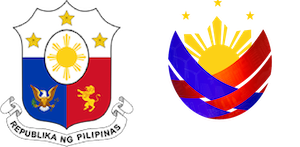
The Philippine National Anthem is a product of revolution, a response to the need of the revolutionary times that gave birth to it. And this need arose in 1898, when the revolution against Spain was in its second year and a Filipino victory was in sight.
Gen. Emilio Aguinaldo astutely recognized the need for national symbols to rally the nation against the enemy. On June 5, 1898, he commissioned Julian Felipe , a Cavite pianist and composer, to work on a march for the revolutionists. Felipe worked on the assignment for six days and on June 11, sitting in front of a piano in the Aguinaldo living room, played his music before the presidente and his lieutenants. Named by Felipe the Marcha Filipino Magdalo (after Aguinaldo's nom de guerre and his faction in the Katipunan), the music was adopted on the spot and renamed the Marcha Nacional Filipina (Philippine National March).
The national anthem was heard publicly for the first time on June 12, 1898, when, standing on the balcony of his Kawit mansion, Aguinaldo proclaimed Asia's first independent republic before a cheering throng. Two rallying symbols were presented to the infant nation that day. Also displayed for the first time was the national flag, unfurled to the stirring strains of the marcha nacional played by the band of San Francisco de Malabon (now Heneral Trias) whose members had learned the music the day before.
But still without words, Felipe's music was simply a march. It could not be sung. The need for lyrics was just as great as there was for the music. In December 1898, the Philippines was ceded by Spain to the United States of America in the Treaty of Paris. Having thrown off Spanish rule, the Filipinos found themselves under new colonial masters, the Americans. In February of 1899, the Filipino-American War erupted.
The defiant lyrics to march the stirring strains of Felipe were supplied by Jose Palma, a 23-year old soldier who was as adept with the pen as he was with the sword. He wrote a poem entitled "Filipinas" and this was wed to the Felipe composition. The anthem was readily taken by the young nation at war. But on March 23,1901, the war with America ground to a halt with the capture of Aguinaldo in Palanan, Isabela.
The first half of the century were years of humiliation for the Filipinos and their anthem. The American administors discouraged the singing of the anthem and in the 1920s, Palma's original spanish lyrics underwent several English and Tagalog translations. The most popular were the following versions, one in English by Camilo Osias and M.A.L. Lane and one in Tagalog.
In 1956, a new version penned by the Surian ng Wikang Pambansa (Institute of National Language) was adopted. These are the official Filipino lyrics sung all over the country today and given wider propagation through radio, television and cinema.